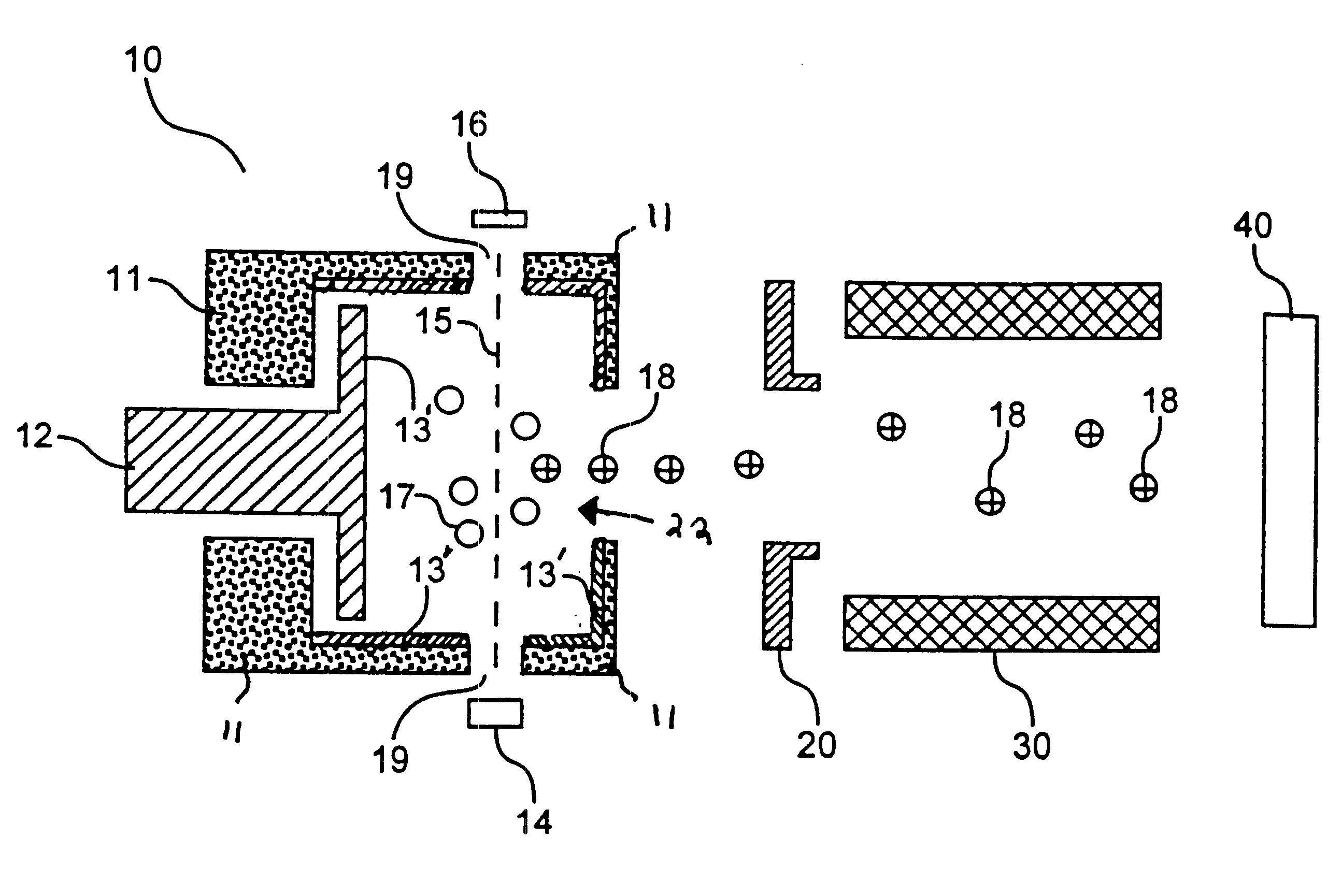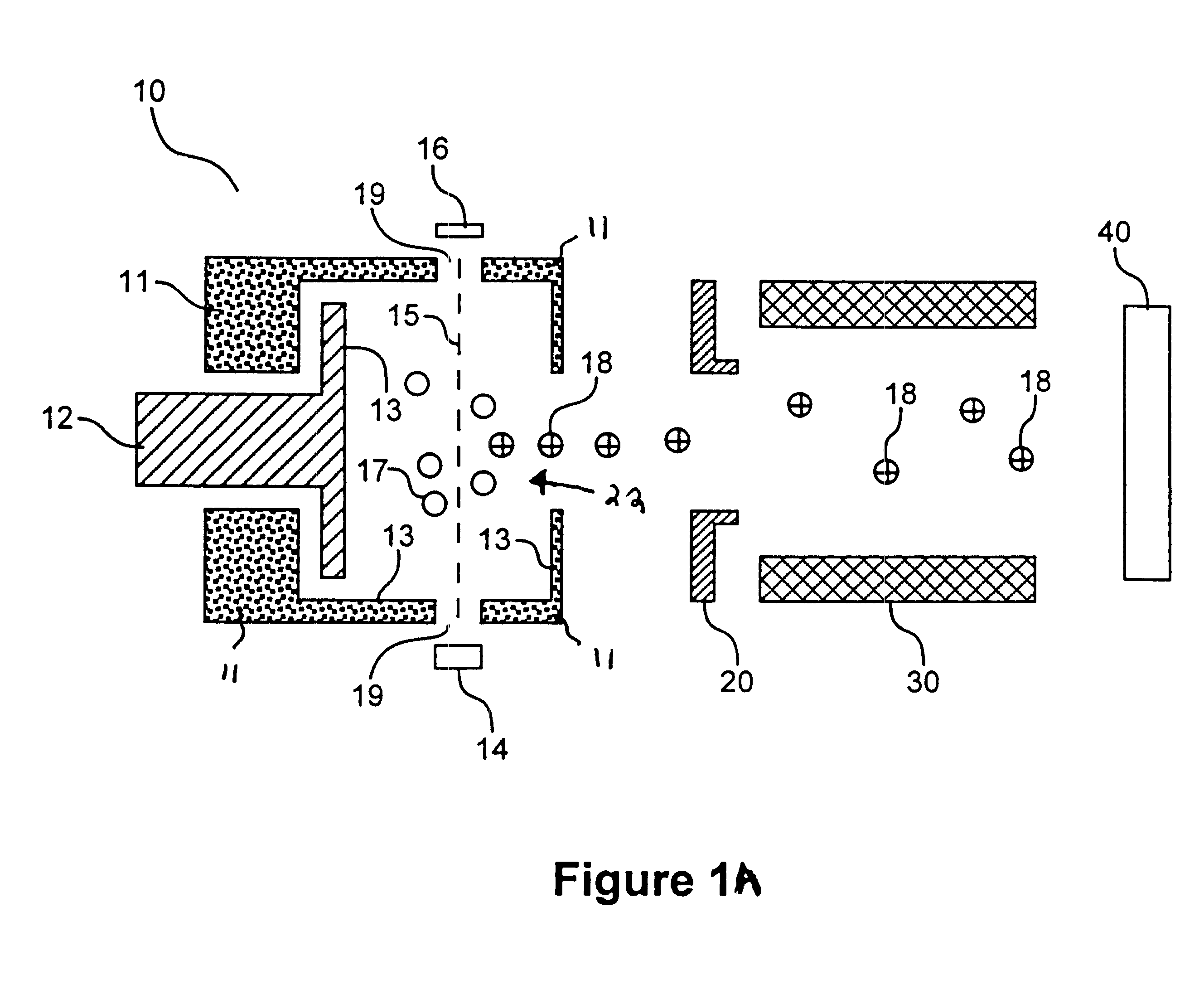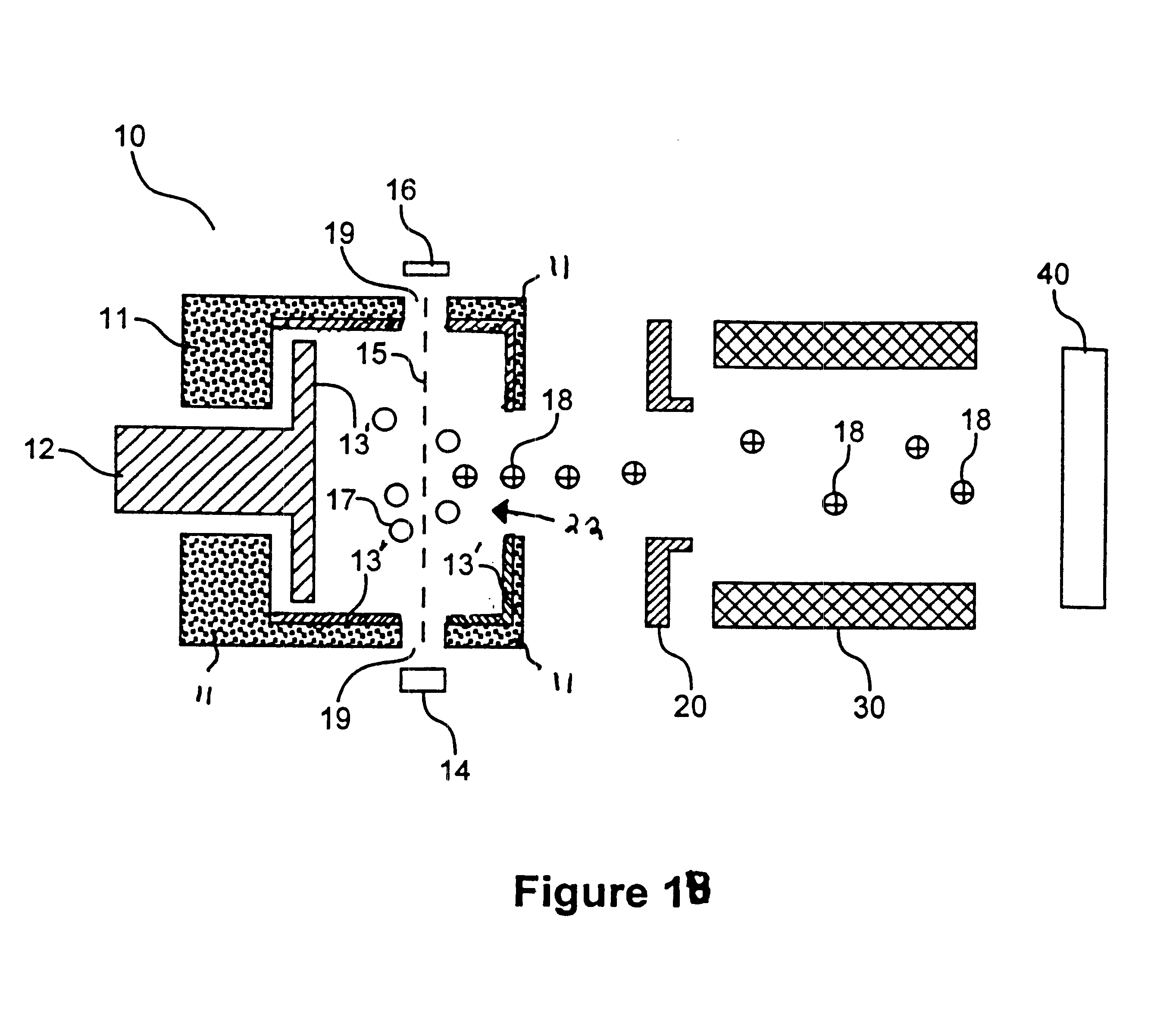Ionization chamber for reactive samples
- Summary
- Abstract
- Description
- Claims
- Application Information
AI Technical Summary
Benefits of technology
Problems solved by technology
Method used
Image
Examples
example 2
An inner surface of the ionization chamber of Example 1 was coated with titanium nitride. The coating was applied by a commercial vendor. The series of analyte solutions containing 2,4-dinitrophenol was analyzed in the mass spectrometer. For each solution, RRF was determined according to equation (I). The RRF for each solution is reported in FIG. 2. It is evident that for all concentrations of 2,4-dinitrophenol, RRF was greater when a titanium nitride coating was employed. This indicates that the titanium nitride surface is less reactive with respect to 2,4-dinitrophenol than a freshly cleaned 316 stainless steel surface with no coating.
example 3
An inner surface of the ionization chamber of Example 1 coated with a layer of tungsten disulfide was provided in the mass spectrometer of Example 1. The coating was applied by subjecting the ion source to ajet of tungsten disulfide particles. The coating was sufficiently thick to obscure the shine of the stainless steel. The series of analyte solutions of Example 1 was analyzed in the mass spectrometer. For each solution, an RRF was determined according to equation (I). The RRF for each solution is reported in FIG. 2. It is evident that for all concentrations of 2,4-dinitrophenol, RRF was greater when a tungsten disulfide coated 316 stainless steel surface was employed. This indicates that the tungsten disulfide surface is less reactive with respect to 2,4-dinitrophenol than a freshly cleaned 316 stainless steel ion source with no coating.
PUM
| Property | Measurement | Unit |
|---|---|---|
| Ratio | aaaaa | aaaaa |
| Electrical conductor | aaaaa | aaaaa |
| Interaction | aaaaa | aaaaa |
Abstract
Description
Claims
Application Information
 Login to View More
Login to View More - R&D
- Intellectual Property
- Life Sciences
- Materials
- Tech Scout
- Unparalleled Data Quality
- Higher Quality Content
- 60% Fewer Hallucinations
Browse by: Latest US Patents, China's latest patents, Technical Efficacy Thesaurus, Application Domain, Technology Topic, Popular Technical Reports.
© 2025 PatSnap. All rights reserved.Legal|Privacy policy|Modern Slavery Act Transparency Statement|Sitemap|About US| Contact US: help@patsnap.com



